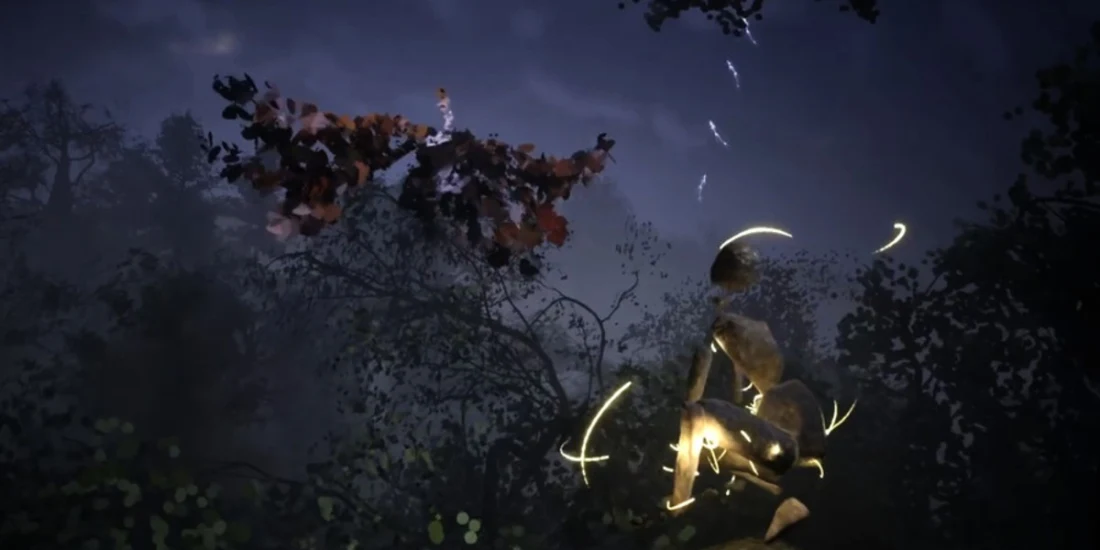RSC 'Dream' is an inventive, condensed take on the Bard
A brave venture that by necessity feels incomplete, Dream offers a take on A Midsummer Night's Dream that may surprise even those who think they've seen everything that can be done with Shakespeare's most-performed comedy. (The Frederick Ashton ballet, a classic of the English repertoire, whittles a multi-strand text down to an hour of dance.) Running barely 30 minutes, plus a post-show panel that I would consider crucial to the experience, the attempt here is to allow technology to push at the boundaries of how we experience and make sense of Shakespeare, even if purists may well wonder what has happened to the play along the way: the compact (to put it mildly) narrative on view here is courtesy Pippa Hill, the RSC's literary head.
The focus perhaps inevitably falls to Puck, that adventuresome sprite who provides our way into a VR-heavy, digital world that jettisons most of the actual play in favour of a scenic wonderland that suggests Tim Burton crossed with Maurice Sendak. "It's dusk already and time moves fast," we're told in a line (one of many) that you won't find in the original text. Before you can say "encircle the earth", EM Williams's masked Puck has suited up and plunged us into a world of motion capture performance and avatars in which we see the actor one minute, the next an alternate self seemingly assembled from rocks and who, indeed, is referenced as "rough-cast stone." The RSC offered a dry run of sorts for this with a 2017 version of The Tempest that gave actor Mark Quartley's Ariel a digital avatar, and Ariel and Puck constitute comparably nimble, otherworldly presences.
Puck's fairyland companions exist at the centre of this self-evident work-in-progress: an ambitious substitution for a production intended for this time last year that was to play to audiences live and online. (The reach of this one would appear sizable, with over 3200 people logged into the morning performance I watched: the show has been scheduled at various times throughout the day, and night, so as to accommodate viewers the world over.) Now and again, you hear a vaunted bit of the Bard - Oberon's ever-resonant reference to "a bank where the wild thyme flows," and the woebegone Helena's acknowledgment of "legs longer though to run away".
For the most part, however, the effect of Robin McNicholas's production is of a sensory feast that aims to find a visual correlative for one strand of an infinitely elastic play whose woodlands can be a place of release and ecstasy, on the one hand, foreboding and danger on the other. I particularly warmed to Cobweb, the character's filaments here seen encasing a gigantic eye, and the motley amalgam of objects (twigs and the like) that make up Peaseblossom. Interactive come-ons allow a spectator to drag fireflies hither and yon in keeping with Puck's request near the start to "light my way," at which point one might as well have landed in some hallucinatory equivalent to Tinkerbell in Peter Pan. I couldn't see that my participation made much difference.
Still, there's no denying the capacious effort and imagination that have gone into a vastly collaborative effort that conjoins the worlds of gaming platforms, the VR collective Marshmallow Laser Feast (great name!), and a shimmering soundscape that makes room for the conductor-composer Esa-Pekka Salonen and his Philharmonia Orchestra, alongside Swedish composer Jesper Nordin and none other than Maurice Ravel. Nick Cave, of all people, is heard as a pre-recorded presence of sonorous welcome, while the actors themselves have been assembled at Portsmouth's Guildhall, where they gather to answer questions in a call-and-response with their audience that is an essential component of the event. Is this the future of Shakespeare? Hard to say, and it's certainly no substitution for his work. But the Bard will always be greater than anything any one production can throw at him, and if Dream charts one way of allowing easier access to what for many remains a famously knotted, gnarled landscape, then bring it on, I say — while also allowing the play itself a chance to breathe.
Originally published on
